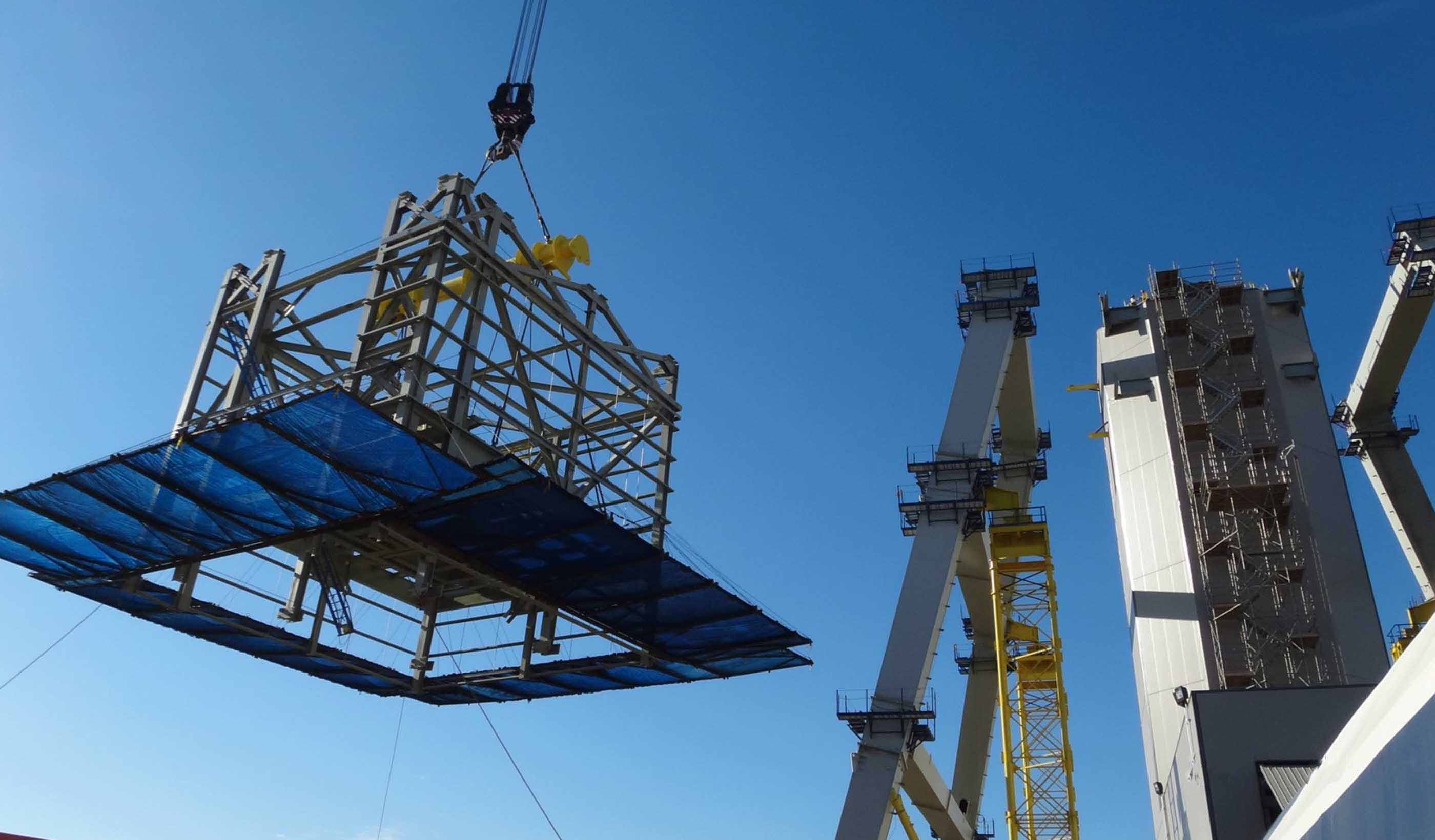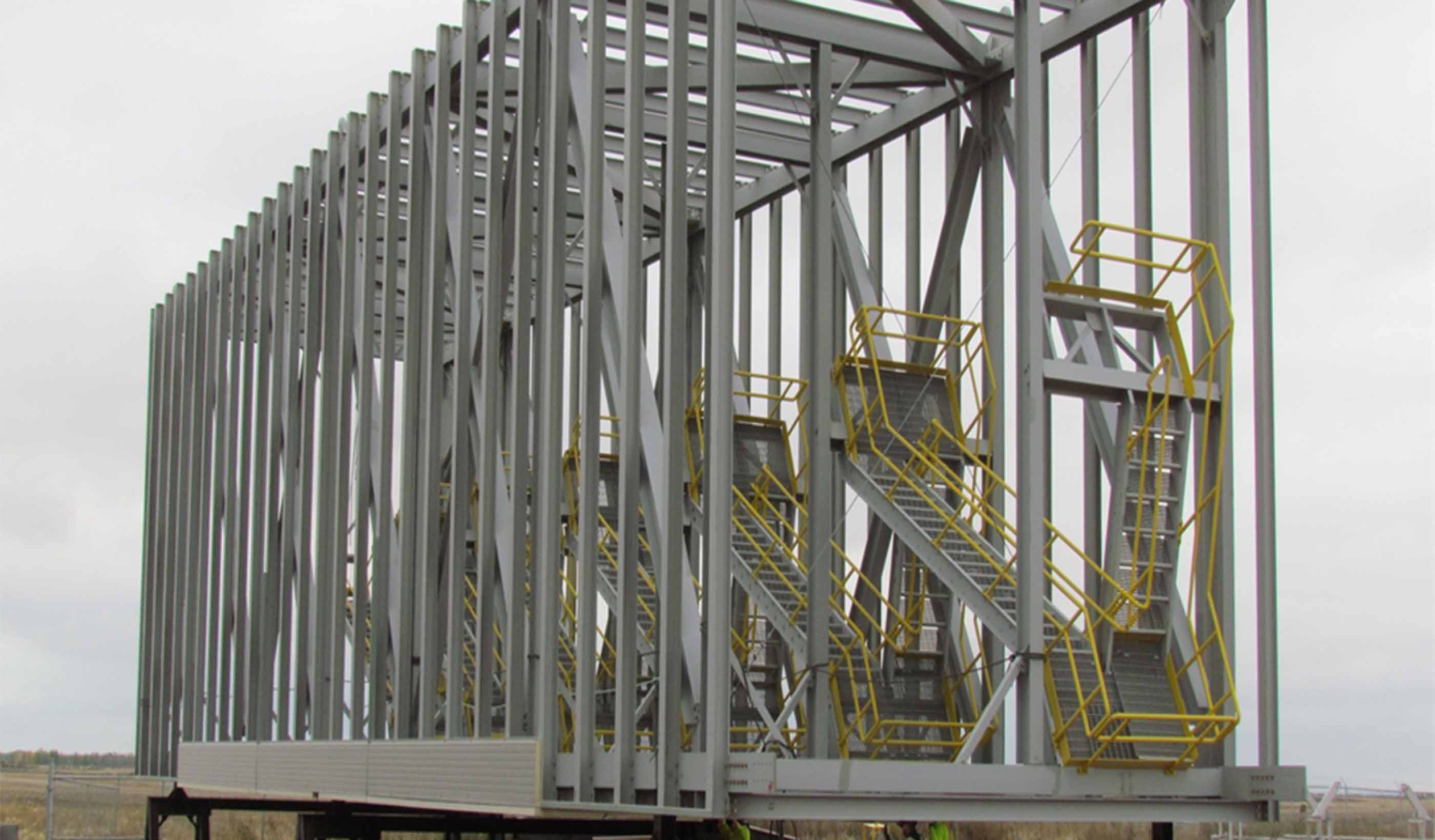6 steps for effective modularization and preassembly planning
April 22, 2021
April 22, 2021
By enhancing safety, quality, and efficiency, we can increase the overall well-being of projects
One of the trends we have seen over the past few years is how the construction industry is adopting modularization strategies more frequently. Modularization breaks down large facilities into smaller sets of modules that can be constructed separately or off-site. There are a few key reasons why modularization and preassembly planning are good for construction projects.
Firstly, is safety. Through modularization and preassembly planning, we can help to eliminate or reduce the risk to workers during fabrication and construction activities. Secondly, is quality. By providing opportunities to do more installation and construction activities at grade level—on- or off-site, and not at heights—there will be a more controlled work environment. And thirdly is construction efficiency. When preplanning fabrication, logistics, shipping, and construction activities during the design phase, we have a better opportunity to maximize the effectiveness and efficiency of our construction activities.
So, what can you do to implement modularization and preassembly planning on your project? Below are six key steps.

One of the trends we have been witnessing over the past few years is how the construction industry is adopting modularization strategies more frequently.
One of the first things to do when planning your project is to create a 3D model of the facility structure, services, and equipment. Why? To give yourself a better picture of what your project will look like and how it can be best constructed. This will include a first pass breakdown of facility modules based on size and weight. However, Step 2 will provide clearer constraints to the modularization and preassembly plan.
The next thing you can do is create a detailed crane study, which includes crane availability, sizing, lift analysis, and geotechnical requirements. Oftentimes, the crane availability may influence how the facility is modularized.
Follow up your crane study with a shipping and logistics review to understand the impact to your project schedule. This includes maximum size and weight restrictions for fabrication facilities, how you are shipping to site, and the consideration of seasonal impacts such as a half-load season or winter road access. You should also review the offloading of components at site, including laydown locations, traffic flow, and crane requirements to move components.
Based on the outcomes and insights you gathered during Step 2, you can now start your modularization and preassembly planning. It is important to note that your crane and logistics studies may modify the original modularization and preassembly plan as the size and weight constraints are now more fully understood and scheduling constraints are applied.
Once you have your modeling finalized, it is now time for sequencing—the order in which modules are completed. You can achieve this through animating your 3D model to show how the components are sequenced from shipping points, to laydowns, into preassembled components, and into final position. The animation process provides a good overview to bring us to Step 4.
When preplanning fabrication, logistics, shipping, and construction activities during the design phase, we have a better opportunity to maximize the effectiveness and efficiency of our construction activities.
When it comes to design review, the inclusion of fabricators and constructors is helpful. This can be done with the selected party or through an early engagement process with multiple parties—it all depends on the procurement and contracting strategy established for the project.
Next, it is time to provide an overview of the work done to date, including reviewing the animated 3D model as well as the crane and logistics studies. This review needs to be focused on hazard identification and risk mitigation. Typically, as we run through the sequencing of the work from fabrication through final construction, we will identify areas where we see potential risk exposure.
To mitigate the risk, you need to thoroughly review the temporary works and rigging requirements for the whole program. This involves a prevention-through-design review to verify there is a safe means for worker access during fabrication, shipping, and construction. You always want to reduce working at heights wherever possible and provide all workers with a safe and secure means to conduct their task. Connection efficiency and access are also considered in this step.
To optimize construction efficiency, ensure safe access for workers, and ensure quality work, the design review needs to include how we maximize the architectural, mechanical, and electrical works in each module. An example is making installations off-site in the fabrication shop or at grade level before the modules are lifted into their final position.
During this step, you want to document all risks and potential mitigations for reference during the development of the project schedule, scope of work documents, and any future planning activities. You need to track that all risks have a corresponding mitigative action before you start the work.

You want to create a detailed crane study, which includes crane availability, sizing, lift analysis, and geotechnical requirements.
Based on the outcomes of your crane study, logistics study, and constructability review, your modularization plan can be optimized. Now, you can put your plan against time.
With the sequencing plan well thought out, you can start to finalize the procurement plan. The procurement plan consists of a packaging strategy, required on-site dates, and sequencing of delivery.
At the same time, you can estimate the fabrication and construction durations with the input from fabricators, constructors, and other subject matter experts. These durations will be firmed up during the final fabricators/constructors bidding and selection process.
You will then need to develop an integrated engineering, procurement, and construction schedule to ensure that an achievable plan is in place, the schedule risk is identified, and mitigation plans are understood and applied. This schedule will be finalized once vendors, fabricators, and constructors are selected.
By this stage, you should now have a well thought out plan that identifies the risks and mitigative measures, the sequencing of work, and when materials and equipment will be required.
Now you need to work on the detailed engineering of the facility to allow for tendering the fabrication and construction work. It is best if you have equipment vendor engineering at this point so you can lock in the major components without potential for rework downstream.
This design package will be used to select a fabricator and constructor. Once the selection process is complete, you want to validate the proposed plan as well as all the inputs from the crane and logistics studies. Again, it is advantageous to have these key stakeholders at the table during the review and planning process so that you minimize rework during this final stage. With all the inputs from the selected parties, the plan can be finalized, allowing the schedule to be updated.

By providing opportunities to do more installation and construction activities at grade level—on- or off-site, and not at heights—there will be a more controlled work environment.
There are many aspects of procuring effective modularization and preassembly planning. However, its important to note that many parts can be initiated during the feasibility stages of a project. This planning process is a key component to a robust and optimized execution plan, capital estimate, and construction schedule. Then you can worry about the final details, inclusive of fabricator and constructor input, in the detailed engineering phase when the project sanction is achieved.
Using modularization and preassembly can be a game-changer for a project—and we’re happy to share our lessons learned.